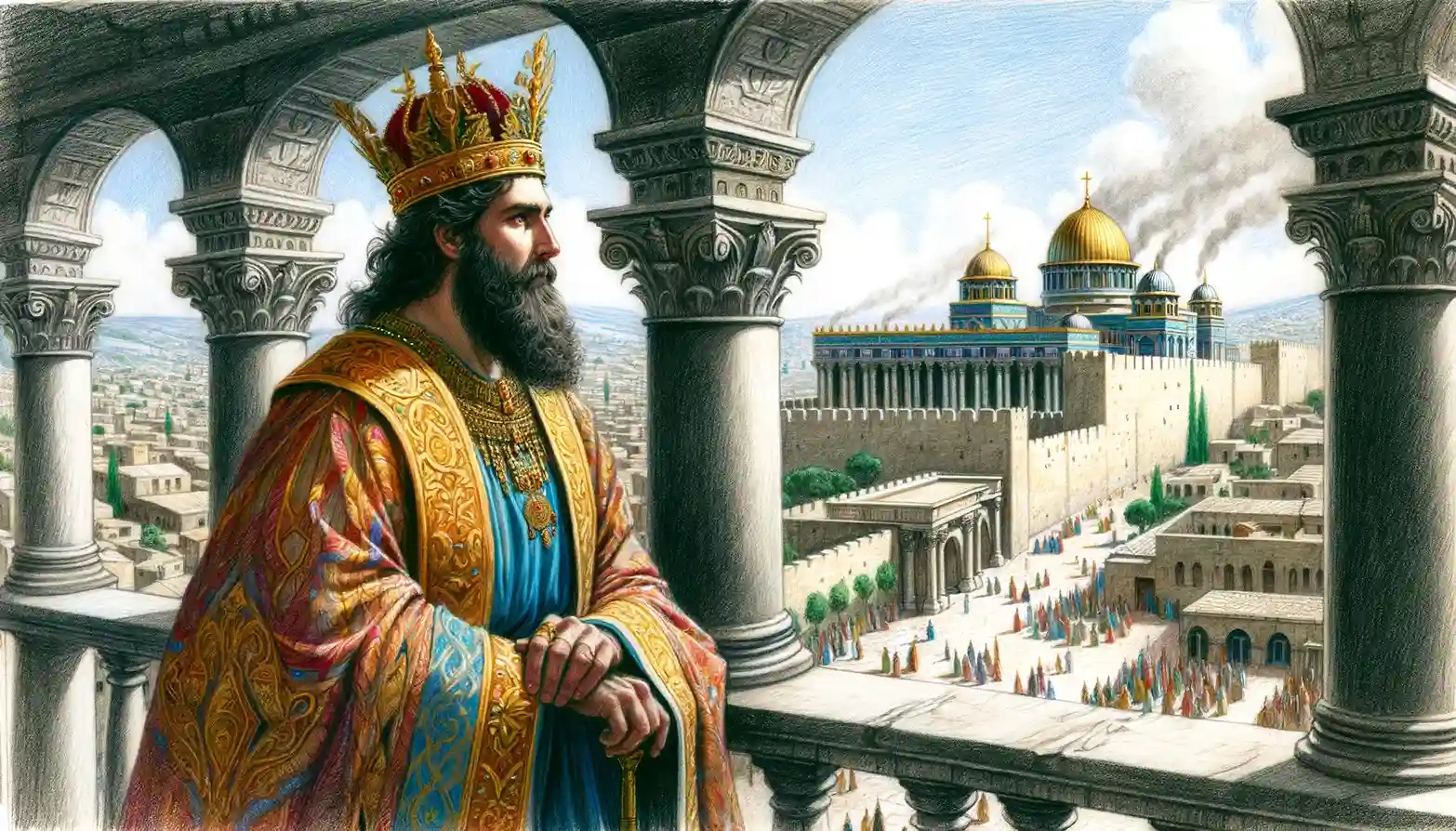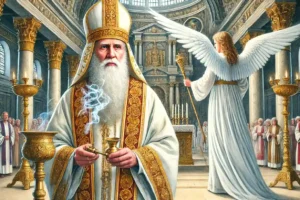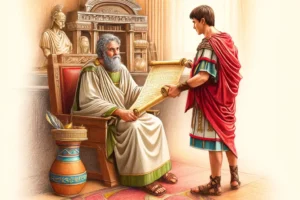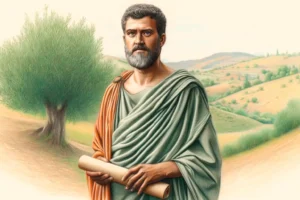
Herod the Great: King of Judea at the time of Jesus’ Birth
Herod the Great, King of Judea at the time of Jesus’ birth, is known for his ambitious building projects and his brutal reign. His rule was marked by political astuteness, architectural achievements, and ruthless measures to secure his throne.
Quick Facts
- King of Judea: Herod the Great ruled Judea from 37 B.C. to 4 B.C.
- Roman Client King: He was appointed King of Judea by the Roman Senate and maintained loyalty to Rome.
- Massive Building Projects: Herod is renowned for his extensive building projects, including the expansion of the Second Temple in Jerusalem.
- Infamous Decree: He ordered the Massacre of the Innocents, as described in the Gospel of Matthew, in an attempt to kill the newborn Jesus.
- Paranoid Ruler: Herod’s reign was marked by paranoia; he executed several members of his own family, including his wife Mariamne and three of his sons.
- Cultural Influences: He embraced Hellenistic culture and integrated it with Jewish traditions, leaving a lasting architectural legacy.
- Death and Legacy: Herod died in 4 B.C., and his kingdom was divided among his sons. His rule is remembered for both his architectural contributions and his tyrannical actions.
Historical and Political Background
Herod the Great, born around 73 B.C., was appointed King of Judea by the Roman Senate in 40 B.C. and assumed full control by 37 B.C. His appointment was largely due to his father Antipater’s political alliances and Herod’s own loyalty to Rome. Herod’s reign was characterized by his efforts to maintain favor with Rome while securing his position in a volatile region.
Building Projects and Architectural Achievements
Herod’s architectural legacy is one of the most notable aspects of his reign. His most famous project was the expansion and renovation of the Second Temple in Jerusalem, which became known as Herod’s Temple. This project not only enhanced the religious significance of the temple but also demonstrated Herod’s dedication to both Jewish traditions and Hellenistic architectural styles.
Other notable projects include:
- The Fortress at Masada: A desert fortress that became a symbol of Jewish resistance.
- Herodium: A palace-fortress near Bethlehem that served as Herod’s burial site.
- Caesarea Maritima: A major port city featuring a large harbor, amphitheater, and aqueducts, showcasing Roman engineering.
Brutal Reign and Paranoia
Herod’s rule was marked by extreme measures to secure his throne. His paranoia led to the execution of several family members, including his wife Mariamne, her two sons, and his eldest son, Antipater. These actions earned him a reputation for brutality and distrust, even among his closest advisors.
Massacre of the Innocents
One of the most infamous events associated with Herod is the Massacre of the Innocents, recorded in the Gospel of Matthew (Matthew 2:16-18). Fearing the prophecy of a newborn king of the Jews, Herod ordered the killing of all male infants in Bethlehem and its vicinity. This brutal act was intended to eliminate the threat posed by Jesus, whom the Magi had identified as the future king.
Cultural and Religious Influence
Herod’s reign was characterized by a blending of Jewish traditions with Hellenistic culture. He supported various building projects that reflected Roman architectural styles while also enhancing Jewish religious sites. His efforts to integrate these cultures left a lasting impact on the region’s architecture and cultural landscape.
Death and Legacy
Herod the Great died in 4 B.C. in Jericho, after a prolonged illness. His death led to the division of his kingdom among his sons, known as the Herodian Tetrarchy. Despite his tyrannical rule, Herod’s architectural contributions and political maneuvers significantly shaped Judea’s history and cultural heritage.
Theological Themes
Herod the Great’s life and reign highlight several theological and historical themes:
- Conflict between Political Power and Divine Purpose: Herod’s attempt to thwart the birth of Jesus underscores the tension between earthly rulers and divine plans.
- Paranoia and Tyranny: His actions exemplify the destructive nature of paranoia and the lengths to which rulers will go to secure their power.
- Legacy of Monuments: Herod’s building projects reflect the desire for lasting legacy and the impact of architectural achievements on cultural and religious identity.
Legacy and Impact
Herod the Great remains a complex figure in history, known for both his significant contributions to architecture and his ruthless measures to maintain power. His reign is a backdrop to the early life of Jesus and the broader historical context of the New Testament narratives.
Conclusion
Herod the Great, King of Judea at the time of Jesus’ birth, is a historically significant figure known for his grand building projects and his brutal methods to secure his throne. His actions, particularly the Massacre of the Innocents, and his architectural legacy have left an indelible mark on biblical history and the cultural landscape of Judea.



